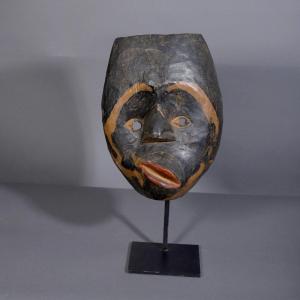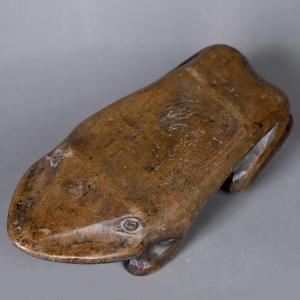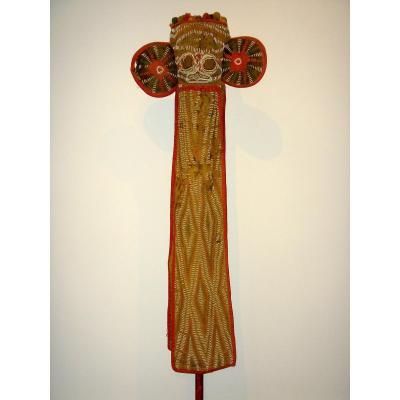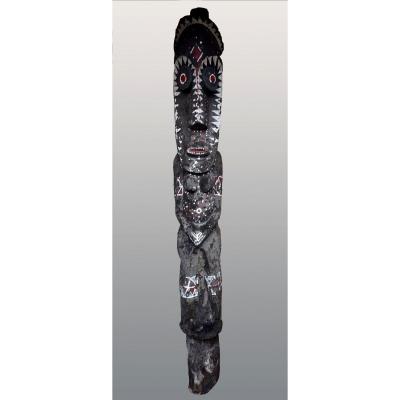In New Ireland, over-modelled skulls were used to commemorate the deceased; they were considered to be representations of the ancestors: around two months after burial, the skull was exhumed and over-modelled to form part of the ritual activities of a second, more elaborate funeral ceremony, accompanied by dances and songs in honour of the deceased, which could take place years later.
Over-modelled skulls were also used ritually in the uli cult, whose ceremonies were closely linked to the commemoration of important ancestors of a clan, where the transfer of power to surviving relatives and the preservation of the existing social order are central.
We can also assume that over-modelled skulls were associated with magical rituals to bring rain. Skulls were seen as mediators between this world and the afterlife. They were displayed on specially prepared altars. The ancestral spirits 'present' in the skulls rested in Tridacna giga mussel shells filled with water - symbolising fertilising rain - and their function was to provoke rain.
Beeswax was generally used to decorate the facial area (sometimes also the sticky parinarium mass of the rose family obtained from fruit); to shape the hairstyle and fill the eye sockets, artists used laterite, a clay containing iron oxide. The sealing caps of the Turbo petholatus sea snail form highly distinctive eyes. Another feature is its wide, slightly open mouth, framed by a curved lip.
Its braided headdress is more recent, probably 20th century.
This skull comes from the Fly River region.
REGION : Papua New Guinea
MATERIAL: Bone, skin, plant fibres
PERIOD : 19th century
DIMENSION: 21 x 12 x 20 cm
Inventory number : OC034

























 Le Magazine de PROANTIC
Le Magazine de PROANTIC TRÉSORS Magazine
TRÉSORS Magazine Rivista Artiquariato
Rivista Artiquariato
